Bricklin SV-1 Was the Future of the Sports Car, ’70s Style
Registered
Thread Starter
For years there was one of these at a used car lot on highway 60 in Brandon......around 2012...
Bricklin SV-1 Was the Future of the Sports Car, ’70s Style
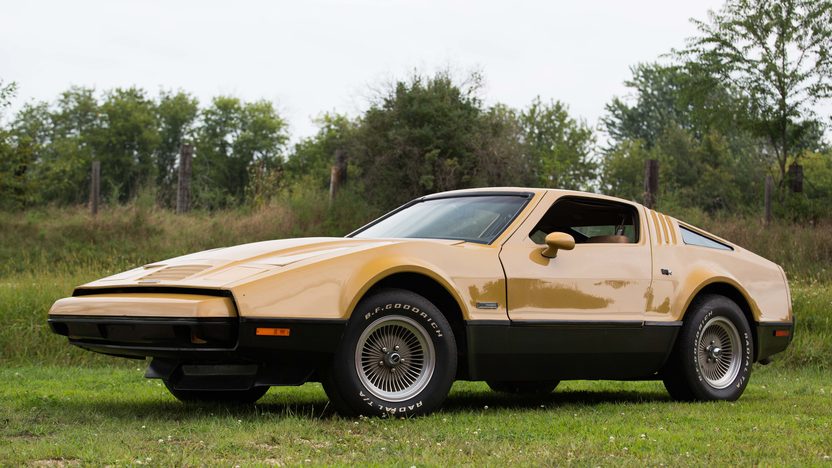 Source: Mecum Auctions
Source: Mecum Auctions
To put it mildly, the mid-’70s were the dark ages for sports cars. In 1974, the federally-mandated 5-mile-per-hour bumpers ruined the look of nearly every sporty car on the market. It was the final year for icons like the Plymouth Barracuda and Dodge Challenger, and with the introduction of crude catalytic converters, power tumbled from a range-topping 355 horsepower (for the ‘Cuda) in 1970, to an emissions-choked 245 horses for ’74. The Ford Mustang was dead in all but name too, having been replaced with the Pinto-based Mustang II. What’s worse, people were actually buying the things. From there, there was nowhere to go but down.
Take this breathless May 1975 Car and Driver comparison between the Chevy Corvette (base horsepower: 165) and a newcomer, the Bricklin SV-1:
Willow Springs Raceway wanders across the desert floor and slithers up foothills of California’s Soledad Mountain as if a passing glacier long ago had snagged the asphalt ribbon and towed part of the course up the slopes. Turn Six’s descending corkscrew is Willow’s equalizer. The Corvette is on its tiptoes diving downward, darting from left to right, its tail yawing sideways under light braking. The Bricklin seizes the opportunity to close the gap — it has the advantage of stability with soft understeer through the switchback and can brake aggressively right up to the pavement’s edge. Delayed by the corrections its driver is forced to make, the Corvette is late turning on the power as it exits onto the straight. Accelerating down the flattening grade, the Chevy gradually recaptures the advantage from the charging Bricklin, and the gap widens on the long back straightaway. By the start/finish line, the interval between the cars has grown to just under two seconds (on a 1:54 lap), a symbolic performance separation that was to hold throughout Car and Driver’s test of the original U.S. sports car and the Canadian-made challenger hot on its heels.
Thankfully, those days are long behind us. Today’s C7 Corvette ZR1 lapped Willow Springs in 1:25.00, and you’ve probably never heard of the Bricklin. On the one hand, that’s understandable; it was purely a product of ’70s-era desperation, and gone in under 24 months. On the other hand, it’s one of the strangest automotive stories ever told, worthy of a spot between the Tucker and the DeLorean. Come to think of it, the SV-1 had a lot in common with both cars…
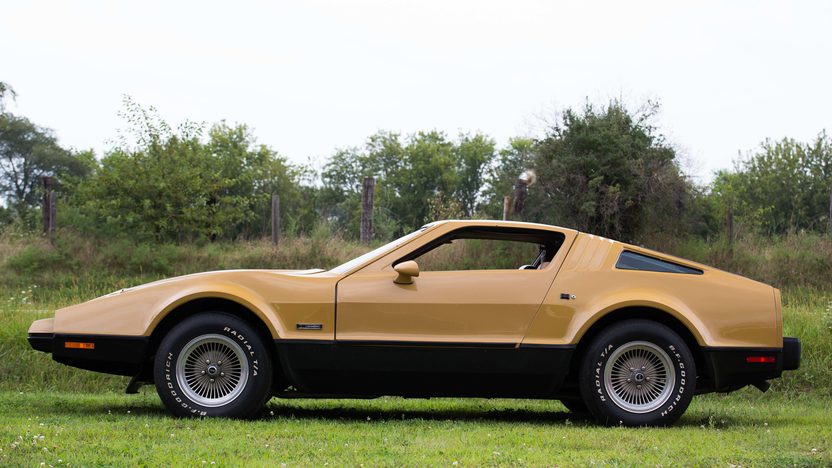 Source: Mecum Auctions
Source: Mecum Auctions
Before we start with the SV-1, the Bricklin story begins — oddly enough — at Subaru. In 1967, Congress passed the strictest safety and emissions standards in U.S. history, calling for (among other things) the switch to unleaded gas, emissions controls, and increased safety equipment. But the Federal Motor Vehicle Safety Standards Code mandated these changes for vehicles over 1,000 pounds.
For Florida businessman Malcolm Bricklin, it was a golden opportunity. After making a fortune founding and selling a chain of successful hardware stores in his early 20s, the 30-year-old Bricklin established Subaru of America, importing the 360 kei car to circumvent the new federal standards. But the Japanese microcar was a safety and public relations disaster in America, and in 1972, he (foolishly, in hindsight) sold his stake in Subaru and set out to build a sports car for the ages.
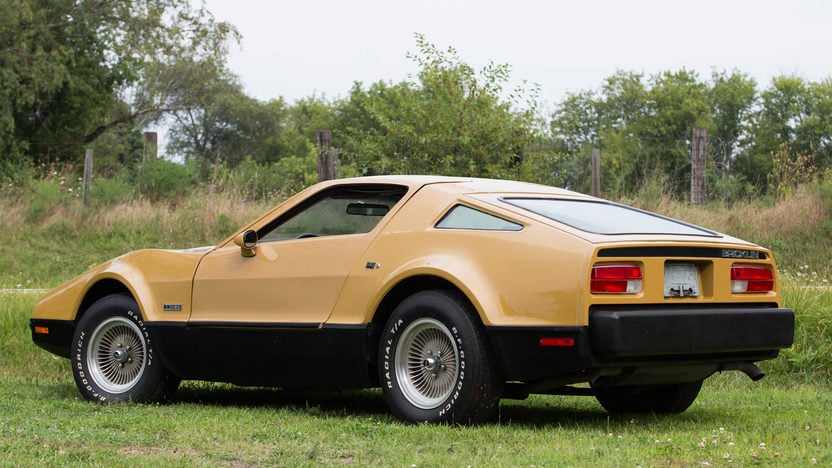 Source: Mecum Auctions
Source: Mecum Auctions
If you think the grumbling from manufacturers about the modern CAFE standards is bad, it’s nothing compared to the upheaval they were forced to go through in the ’70s. Squeezed by the Feds, the oil crisis, and skyrocketing insurance premiums, nothing seemed sacred. Engines needed to be re-engineered to handle unleaded fuel, ride heights needed to be adjusted to meet crash standards, interiors were revamped, and long-standard design standards needed to be rethought. By mid-decade, convertibles had all but disappeared from the roads, and sports cars had for the most part lost their sport. Automakers had begun shifting their efforts into developing large, gawky Experimental Safety Vehicles (ESVs) to keep up with the rising tides.
Bricklin’s car was a safety car too. In fact, that was his angle: an affordable, ultra-modern sports car that would be affordable, cheap to maintain and ensure, exceed all safety and emissions standards… and have power-assisted gull-wing doors. Until this point, the only car to successfully pull off the avant-garde doors was the iconic Mercedes-Benz 300SL of the 1950s. But Bricklin loved the design, and decided that his car needed to have them, even going so far as to declare that they were “practical, as well as safer than ordinary doors.”
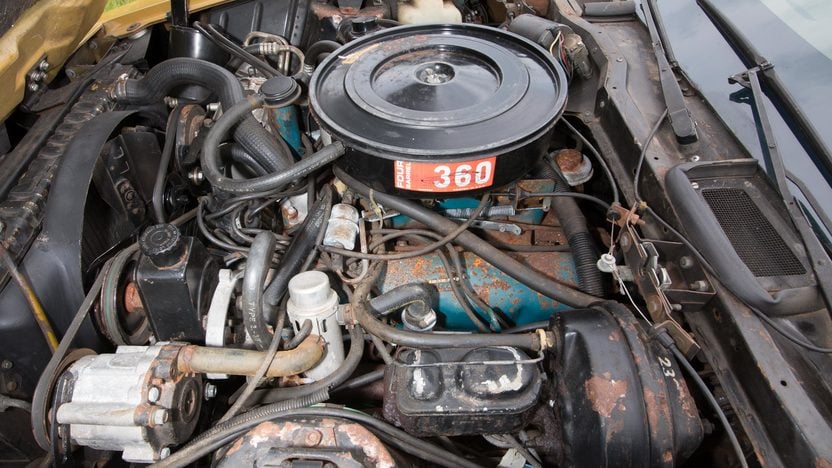 Source: Mecum Auctions
Source: Mecum Auctions
Bricklin looked to California, tapping Herb Grasse, who transformed the 1955 Lincoln Futura into the Batmobile for George Barris for a design, and recruited Bruce Meyers (who invented the Meyers Manx dune buggy) to build a fiberglass prototype, with two more built as a collaboration between the newly-formed Bricklin Vehicle Corporation, and Livonia, Michigan-based AVC Engineering. The monochrome body and hard wedge-shape predicted the design direction of ’80s sports cars, the high door sills and padded interior kept occupants safe in a crash, and the “no-slip” faux-suede seats kept occupants from sliding around the cockpit in hard cornering.
In the summer of ’74, the SV-1 (for “Safety Vehicle,” of course) made its simultaneous debuts at the legendary Four Seasons restaurant in New York and the Riviera Hotel in Las Vegas in front of potential dealers, businessmen, and celebrities, like Paul Newman and racer Bobby Unser, to overwhelmingly positive reviews. The SV-1 would be powered by a 360-cubic-inch V8 bought from AMC, with a suspension and drivetrain from it lowly Hornet sedan, making parts easy to find. It would come in five colors: Safety Orange, Safety Green, Safety Red, Safety White, and Safety Suntan, and it would start at $3,700 ($17K today), making it some $1,500 cheaper than a Corvette. After the successful launch, Bricklin went on a spree, establishing satellite companies, poaching management from major automakers, taking on investors, and selling dealer franchises. Unfortunately, it was too little, too late.
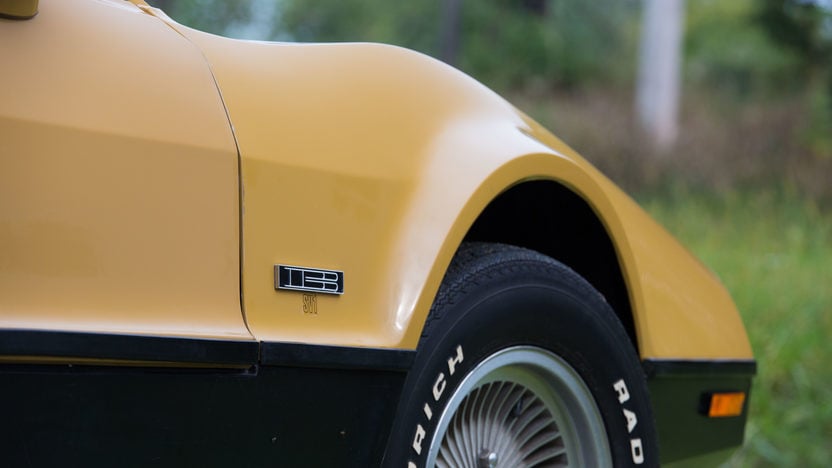 Source: Mecum Auctions
Source: Mecum Auctions
One of the SV-1’s innovations was its composite acrylic-fiberglass body panels. The panels were formed with the color baked into them (like your grandparents’ robin’s egg blue or avocado green bathtub), and could withstand a blow from a 10-pound sledgehammer without so much as a scratch. But the material was incredibly temperamental, prone to discolor and warp in heat, and had a nasty tendency to crack while still in the mold at the factory. And while body panels were cracking at Bricklin’s facility, the company was largely doing the same.
Fresh from his resignation at General Motors, John DeLorean attempted to muscle his way into the company, offering his design expertise, and arguing that his Rolodex would help the company with the establishment in Detroit. When Bricklin declined, DeLorean set off to form his own company, which Bricklin would later claim stole elements from the SV-1 to incorporate into the ill-fated DMC-12.
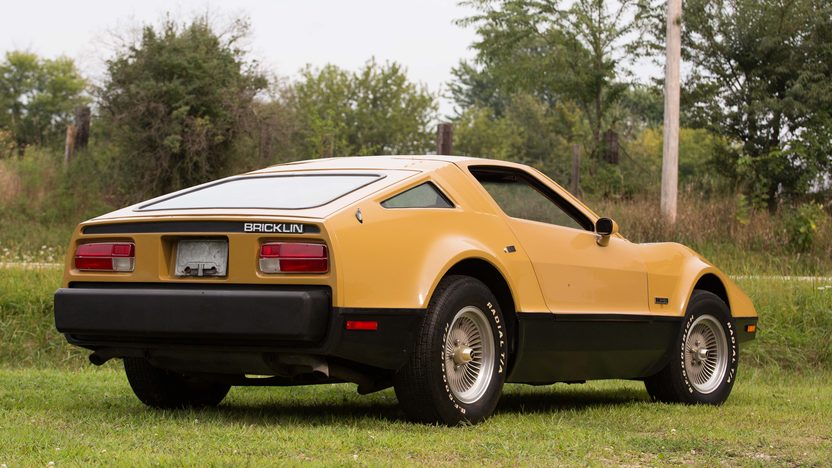 Source: Mecum Auctions
Source: Mecum Auctions
In hindsight, DeLorean’s expertise might have helped. Bricklin had established General Vehicle Incorporated as an umbrella company, which in turn had a partnership with AVI in Livonia to make body panels, the BVC design studio in Scottsdale, and a newly-opened factory in St. John, New Brunswick, Canada to assemble the cars — with Bricklin himself shuttling between each operation on a company jet. With full payrolls, high-priced management and consultants, high tooling costs, and no incoming revenue, the company was growing too big too soon.
To make matters worse, Bricklin employees in St. John had virtually no automotive experience, and while the factory was a boon for the city with 25% unemployment, quality control and employee attendance was woeful. According to legend, once hunting season started, the factory spent days all but deserted, with two women who stayed behind scrambling from station to station.
The company limped into 1975 drowning in red ink. To make matters worse, powertrain supplier AMC was experiencing a crunch of its own, and could no longer supply powerplants to Bricklin. The company switched to the venerable Ford 351-cubic-inch Windsor V8 for its final cars. SV-1s trickled into Bricklin’s 400 dealerships, but warranty claims for the temperamental body panels, atrocious build quality, and problems with the automatic door system began to flood in, and with its credit cut off by most of its suppliers, and most employees refusing to work due to back pay, the company shut its doors in fall 1975, with 40,000 unfilled back orders, and Malcolm Bricklin personally declaring bankruptcy in the process.
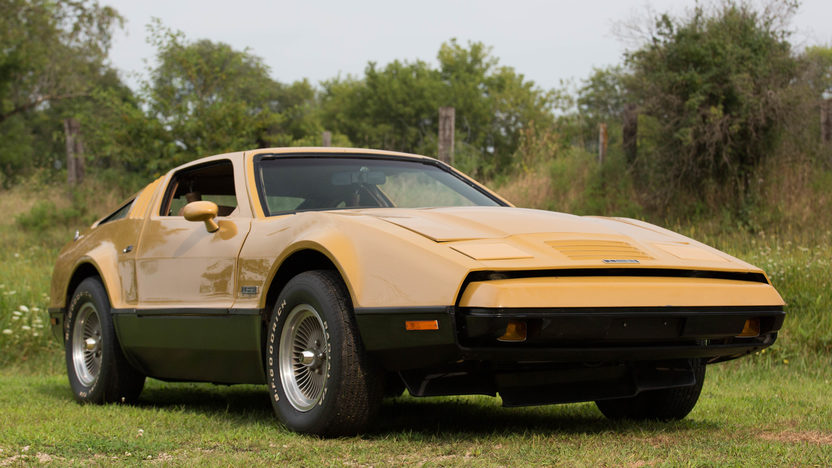 Source: Mecum Auctions
Source: Mecum Auctions
In 1976, Consolidated Auto bought the remaining tooling and parts and assembled a few cars as 1976 models (oddly enough the same company would buy the remaining DeLorean stock in 1982). Thanks to their robust mass-market internals, the cars did drive and handle well for the era, but their odd styling, kit car-level interior, atrocious visibility, and underwhelming performance kept the Bricklin from becoming anything more than a Malaise Era cult car. It’s a bit of a cultural icon in Canada, however, having graced both a postage stamp and a $20 coin.
It’s estimated that there are just over 1,100 of the nearly 3,000 cars built, and while they’re exceedingly rare, they aren’t worth much. The example pictured here was the first production car to roll off the assembly line in 1974, and it sold at auction by Mecum in October 2015 for $43,000. If you play your cards right, you could probably find a tired runner for about 10-15% of that.
After his company’s demise, Malcolm Bricklin went back to the drawing board. In 1982, he founded International Automobile Importers (IAI), buying the rights to Fiat’s aging X/1-9 and 124 Spyder, renaming them the Bertone X/1-9 and Pininfarina Spider, respectively. In 1985, after IAI went bust, he returned to his subcompact car roots, importing the Zastava Koral from Yugoslavia and renaming it the Yugo GV. But the Yugo bombed even worse than the Subaru 360 had, and it left the American market after 1992. But like Subaru, Bricklin got out early, selling his stake in Yugo for a cool $20 million in 1988. His latest business ventures involved establishing the Chinese automaker Chery in the U.S. Like many of his earlier automotive ventures, it failed.
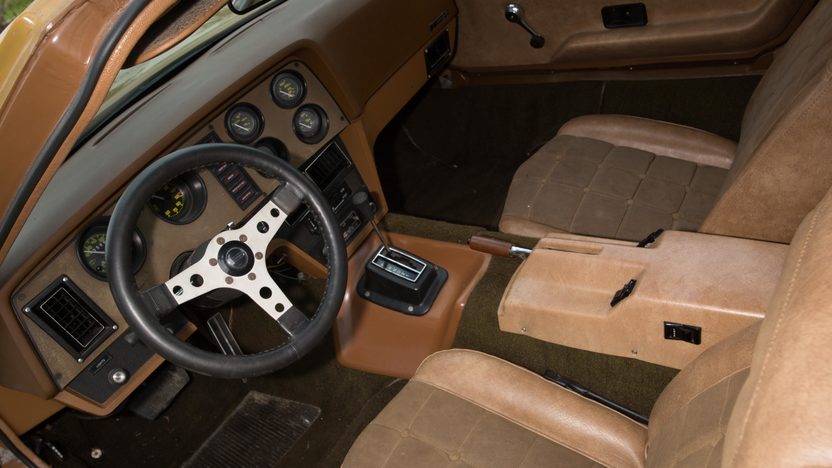 Source: Mecum Auctions
Source: Mecum Auctions
But for a brief moment in 1974-’75, with sports cars as we knew them at their lowest ebb, an outsider with a truly bizarre Canadian-built car was able to win over auto journalists, investors, and prospective buyers, and promise a new era of driving excitement. The Bricklin SV-1 may have come up embarrassingly short, but it sure did it in pure ’70s style.
Bricklin SV-1 Was the Future of the Sports Car, ’70s Style
 Source: Mecum Auctions
Source: Mecum AuctionsTo put it mildly, the mid-’70s were the dark ages for sports cars. In 1974, the federally-mandated 5-mile-per-hour bumpers ruined the look of nearly every sporty car on the market. It was the final year for icons like the Plymouth Barracuda and Dodge Challenger, and with the introduction of crude catalytic converters, power tumbled from a range-topping 355 horsepower (for the ‘Cuda) in 1970, to an emissions-choked 245 horses for ’74. The Ford Mustang was dead in all but name too, having been replaced with the Pinto-based Mustang II. What’s worse, people were actually buying the things. From there, there was nowhere to go but down.
Take this breathless May 1975 Car and Driver comparison between the Chevy Corvette (base horsepower: 165) and a newcomer, the Bricklin SV-1:
Willow Springs Raceway wanders across the desert floor and slithers up foothills of California’s Soledad Mountain as if a passing glacier long ago had snagged the asphalt ribbon and towed part of the course up the slopes. Turn Six’s descending corkscrew is Willow’s equalizer. The Corvette is on its tiptoes diving downward, darting from left to right, its tail yawing sideways under light braking. The Bricklin seizes the opportunity to close the gap — it has the advantage of stability with soft understeer through the switchback and can brake aggressively right up to the pavement’s edge. Delayed by the corrections its driver is forced to make, the Corvette is late turning on the power as it exits onto the straight. Accelerating down the flattening grade, the Chevy gradually recaptures the advantage from the charging Bricklin, and the gap widens on the long back straightaway. By the start/finish line, the interval between the cars has grown to just under two seconds (on a 1:54 lap), a symbolic performance separation that was to hold throughout Car and Driver’s test of the original U.S. sports car and the Canadian-made challenger hot on its heels.
 Source: Mecum Auctions
Source: Mecum AuctionsBefore we start with the SV-1, the Bricklin story begins — oddly enough — at Subaru. In 1967, Congress passed the strictest safety and emissions standards in U.S. history, calling for (among other things) the switch to unleaded gas, emissions controls, and increased safety equipment. But the Federal Motor Vehicle Safety Standards Code mandated these changes for vehicles over 1,000 pounds.
For Florida businessman Malcolm Bricklin, it was a golden opportunity. After making a fortune founding and selling a chain of successful hardware stores in his early 20s, the 30-year-old Bricklin established Subaru of America, importing the 360 kei car to circumvent the new federal standards. But the Japanese microcar was a safety and public relations disaster in America, and in 1972, he (foolishly, in hindsight) sold his stake in Subaru and set out to build a sports car for the ages.
 Source: Mecum Auctions
Source: Mecum AuctionsIf you think the grumbling from manufacturers about the modern CAFE standards is bad, it’s nothing compared to the upheaval they were forced to go through in the ’70s. Squeezed by the Feds, the oil crisis, and skyrocketing insurance premiums, nothing seemed sacred. Engines needed to be re-engineered to handle unleaded fuel, ride heights needed to be adjusted to meet crash standards, interiors were revamped, and long-standard design standards needed to be rethought. By mid-decade, convertibles had all but disappeared from the roads, and sports cars had for the most part lost their sport. Automakers had begun shifting their efforts into developing large, gawky Experimental Safety Vehicles (ESVs) to keep up with the rising tides.
Bricklin’s car was a safety car too. In fact, that was his angle: an affordable, ultra-modern sports car that would be affordable, cheap to maintain and ensure, exceed all safety and emissions standards… and have power-assisted gull-wing doors. Until this point, the only car to successfully pull off the avant-garde doors was the iconic Mercedes-Benz 300SL of the 1950s. But Bricklin loved the design, and decided that his car needed to have them, even going so far as to declare that they were “practical, as well as safer than ordinary doors.”
 Source: Mecum Auctions
Source: Mecum AuctionsBricklin looked to California, tapping Herb Grasse, who transformed the 1955 Lincoln Futura into the Batmobile for George Barris for a design, and recruited Bruce Meyers (who invented the Meyers Manx dune buggy) to build a fiberglass prototype, with two more built as a collaboration between the newly-formed Bricklin Vehicle Corporation, and Livonia, Michigan-based AVC Engineering. The monochrome body and hard wedge-shape predicted the design direction of ’80s sports cars, the high door sills and padded interior kept occupants safe in a crash, and the “no-slip” faux-suede seats kept occupants from sliding around the cockpit in hard cornering.
In the summer of ’74, the SV-1 (for “Safety Vehicle,” of course) made its simultaneous debuts at the legendary Four Seasons restaurant in New York and the Riviera Hotel in Las Vegas in front of potential dealers, businessmen, and celebrities, like Paul Newman and racer Bobby Unser, to overwhelmingly positive reviews. The SV-1 would be powered by a 360-cubic-inch V8 bought from AMC, with a suspension and drivetrain from it lowly Hornet sedan, making parts easy to find. It would come in five colors: Safety Orange, Safety Green, Safety Red, Safety White, and Safety Suntan, and it would start at $3,700 ($17K today), making it some $1,500 cheaper than a Corvette. After the successful launch, Bricklin went on a spree, establishing satellite companies, poaching management from major automakers, taking on investors, and selling dealer franchises. Unfortunately, it was too little, too late.
 Source: Mecum Auctions
Source: Mecum AuctionsOne of the SV-1’s innovations was its composite acrylic-fiberglass body panels. The panels were formed with the color baked into them (like your grandparents’ robin’s egg blue or avocado green bathtub), and could withstand a blow from a 10-pound sledgehammer without so much as a scratch. But the material was incredibly temperamental, prone to discolor and warp in heat, and had a nasty tendency to crack while still in the mold at the factory. And while body panels were cracking at Bricklin’s facility, the company was largely doing the same.
Fresh from his resignation at General Motors, John DeLorean attempted to muscle his way into the company, offering his design expertise, and arguing that his Rolodex would help the company with the establishment in Detroit. When Bricklin declined, DeLorean set off to form his own company, which Bricklin would later claim stole elements from the SV-1 to incorporate into the ill-fated DMC-12.
 Source: Mecum Auctions
Source: Mecum AuctionsIn hindsight, DeLorean’s expertise might have helped. Bricklin had established General Vehicle Incorporated as an umbrella company, which in turn had a partnership with AVI in Livonia to make body panels, the BVC design studio in Scottsdale, and a newly-opened factory in St. John, New Brunswick, Canada to assemble the cars — with Bricklin himself shuttling between each operation on a company jet. With full payrolls, high-priced management and consultants, high tooling costs, and no incoming revenue, the company was growing too big too soon.
To make matters worse, Bricklin employees in St. John had virtually no automotive experience, and while the factory was a boon for the city with 25% unemployment, quality control and employee attendance was woeful. According to legend, once hunting season started, the factory spent days all but deserted, with two women who stayed behind scrambling from station to station.
The company limped into 1975 drowning in red ink. To make matters worse, powertrain supplier AMC was experiencing a crunch of its own, and could no longer supply powerplants to Bricklin. The company switched to the venerable Ford 351-cubic-inch Windsor V8 for its final cars. SV-1s trickled into Bricklin’s 400 dealerships, but warranty claims for the temperamental body panels, atrocious build quality, and problems with the automatic door system began to flood in, and with its credit cut off by most of its suppliers, and most employees refusing to work due to back pay, the company shut its doors in fall 1975, with 40,000 unfilled back orders, and Malcolm Bricklin personally declaring bankruptcy in the process.
 Source: Mecum Auctions
Source: Mecum AuctionsIn 1976, Consolidated Auto bought the remaining tooling and parts and assembled a few cars as 1976 models (oddly enough the same company would buy the remaining DeLorean stock in 1982). Thanks to their robust mass-market internals, the cars did drive and handle well for the era, but their odd styling, kit car-level interior, atrocious visibility, and underwhelming performance kept the Bricklin from becoming anything more than a Malaise Era cult car. It’s a bit of a cultural icon in Canada, however, having graced both a postage stamp and a $20 coin.
It’s estimated that there are just over 1,100 of the nearly 3,000 cars built, and while they’re exceedingly rare, they aren’t worth much. The example pictured here was the first production car to roll off the assembly line in 1974, and it sold at auction by Mecum in October 2015 for $43,000. If you play your cards right, you could probably find a tired runner for about 10-15% of that.
After his company’s demise, Malcolm Bricklin went back to the drawing board. In 1982, he founded International Automobile Importers (IAI), buying the rights to Fiat’s aging X/1-9 and 124 Spyder, renaming them the Bertone X/1-9 and Pininfarina Spider, respectively. In 1985, after IAI went bust, he returned to his subcompact car roots, importing the Zastava Koral from Yugoslavia and renaming it the Yugo GV. But the Yugo bombed even worse than the Subaru 360 had, and it left the American market after 1992. But like Subaru, Bricklin got out early, selling his stake in Yugo for a cool $20 million in 1988. His latest business ventures involved establishing the Chinese automaker Chery in the U.S. Like many of his earlier automotive ventures, it failed.
 Source: Mecum Auctions
Source: Mecum AuctionsBut for a brief moment in 1974-’75, with sports cars as we knew them at their lowest ebb, an outsider with a truly bizarre Canadian-built car was able to win over auto journalists, investors, and prospective buyers, and promise a new era of driving excitement. The Bricklin SV-1 may have come up embarrassingly short, but it sure did it in pure ’70s style.
__________________
Keystone Motor Club (Founded 2012)... Free car show Every 3rd Saturday, newsletter is
https://www.tamparacing.com/forums/e...-car-club.html
Keystone Facebook ...click: "Keystone Motor Car Club"
Port Richey Rod Run at Coast Buick GMC Coming May 25 2024
https://carstoshow.com/registerevent.aspx?eventid=99114
50's Diner US19.... A Florida Attraction.
1730 US-19, Holiday Fl 34691 click: https://www.tamparacing.com/forums/t...-racing.html CHRA sanctioned cruise-in.
Cruise-In; Free; Every Saturday 5-8PM plus 10% off the whole menu to cruisers
All Cars Every 2nd Saturday Free Breakfast: Since 2015 and more. click: https://www.tamparacing.com/forums/e...ast-tampa.html
Tampa Racing.com covers the Tampa car scene and supports many fund raisers, worthy causes and events that enrich our community. We hope you enjoy them all.
What do I do? ---- on-site *Aftermarket* spring/suspension installations --- on-site impact wrenching---street lowering with your own stock springs...........True Bi-xenon HID projector headlight conversions........ Much more at Bob's Garage!
https://www.tamparacing.com/forums/b...ontact-us.html
https://www.tamparacing.com/forums/b...e-senor-honda/
Keystone Motor Club (Founded 2012)... Free car show Every 3rd Saturday, newsletter is
https://www.tamparacing.com/forums/e...-car-club.html
Keystone Facebook ...click: "Keystone Motor Car Club"
Port Richey Rod Run at Coast Buick GMC Coming May 25 2024
https://carstoshow.com/registerevent.aspx?eventid=99114
50's Diner US19.... A Florida Attraction.
1730 US-19, Holiday Fl 34691 click: https://www.tamparacing.com/forums/t...-racing.html CHRA sanctioned cruise-in.
Cruise-In; Free; Every Saturday 5-8PM plus 10% off the whole menu to cruisers
All Cars Every 2nd Saturday Free Breakfast: Since 2015 and more. click: https://www.tamparacing.com/forums/e...ast-tampa.html
Tampa Racing.com covers the Tampa car scene and supports many fund raisers, worthy causes and events that enrich our community. We hope you enjoy them all.
What do I do? ---- on-site *Aftermarket* spring/suspension installations --- on-site impact wrenching---street lowering with your own stock springs...........True Bi-xenon HID projector headlight conversions........ Much more at Bob's Garage!
https://www.tamparacing.com/forums/b...ontact-us.html
https://www.tamparacing.com/forums/b...e-senor-honda/
Last edited by senor honda; 01-03-2018 at 08:30 AM.
Thread
Thread Starter
Forum
Replies
Last Post
senor honda
Photography & Graphics
2
07-03-2021 03:43 PM
senor honda
GM Tech - Buick, Cadillac, Chevrolet, GMC, Hummer, Pontiac, Saturn Tech
2
03-17-2019 02:23 AM
Kawieboyy1
Cars For Sale / Wanted
19
04-21-2009 07:38 PM








